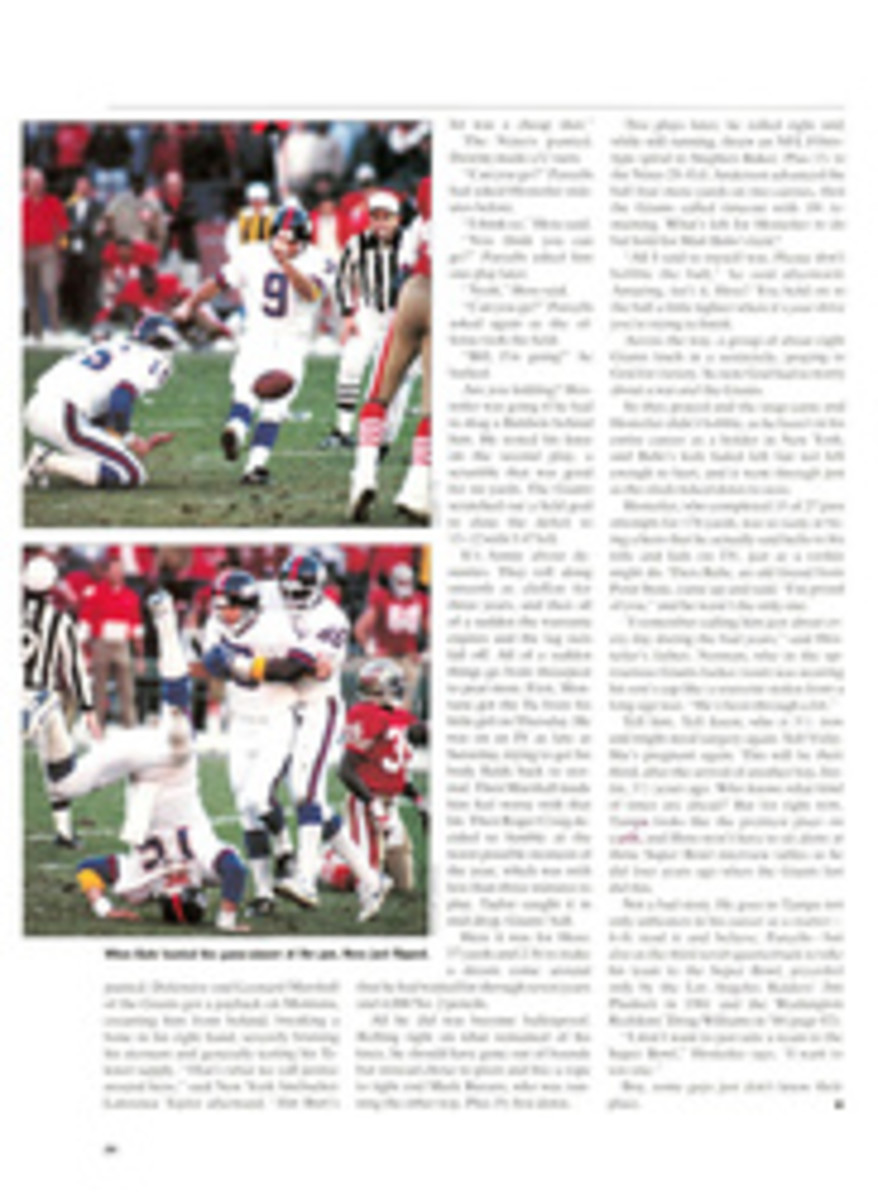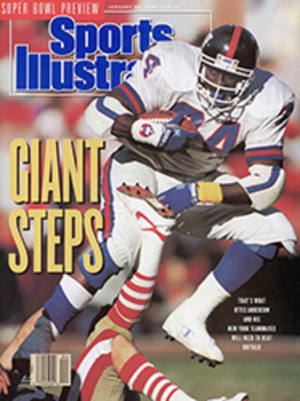
HE THROWS FREE THROWS BY THE SCORE
Ted St. Martin of Jacksonville is in the Guinness Book of World Records, and a ball he once used is in the Basketball Hall of Fame. Yet he never made the NBA, never played college ball. Although he used to shoot around as a kid, he wasn't the star of his high school team in Naches, Wash. In fact, the 55-year-old St. Martin had given up the game altogether until a fateful day two decades ago.
"Here I was," St. Martin tells it, "35 years old, a dairy farmer in Riverdale, Calif., and I got to thinking what a shame it was that I'd become rusty at the sport I loved so much as a kid." So he nailed a hoop to the side of the dairy barn and started shooting. After a while he found he was able to hit a couple hundred free throws in a row. St. Martin didn't think much of that—after all, he had always been able to shoot free throws. At age 13 he had placed third in a regional shooting contest. No, he didn't think much about it. But others did. St. Martin, having regained all his old form at the barnyard basket, proceeded one evening to amaze family and friends by firing off 514 free throws in a row.
"Then I called The Fresno Bee to see if they knew what the alltime record was," St. Martin says. "They researched it, and came back with 144. And I said, 'Hold on there! I can beat that!' " But with everyone watching, he got off his stride and muffed his 87th shot. Reassembling the scoffers and doubters, he staged another attempt and this time shot an uncanny 200 in a row. Since then, the 5'7" St. Martin has set new records time and time again. On June 25, 1977, he upped the count to 2,036 without a miss.
"Heck," he says. "That day I had shot a few hundred before they even began counting."
Compare and contrast: The NBA record for consecutive free throws is 78, set by Houston's Calvin Murphy during the 1980-81 season.
While the 2,036 straight is St. Martin's Ruthian statistic, there are others: He has hit 84 buckets from 30 feet in eight minutes. He has made 258 from the free-throw distance of 15 feet in 10 minutes. In one 24-hour period he sank 14,466 free throws, scoring at a 90% clip for the day. (By the way, that's around 670 free throws per hour, or more than 11a minute.) His best hourly rate—850 per—was set in 1974 at a sporting goods exhibition in Chicago, where he made 95% of his shots for eight straight hours.
As you might imagine, Ted St. Martin is no longer a dairy farmer. He now makes his living at basketball free-throwing. Sponsored by Coors Light, St. Martin travels the country, putting on demonstrations and taking on challengers. He has performed during the Final Four weekend, at NBA games, at local benefits and at grand openings. He has competed in malls, at charity events, conventions and carnivals.
A typical gig took place last September at the Delchamps Food Fest in Mobile, Ala., where food industry representatives gather annually to pass out samples and trade tidbits about food. Thousands of people waited in long lines for hot dogs made of turkey, or bits of imitation beef made of chicken. St. Martin, meanwhile, was off in a corner, setting up his hoop operation with the assistance of his wife, Barbara. She met him 17 years ago at just such an exhibition in Orange, Calif. They married in 1975, and settled in Jacksonville. At the Delchamps show, Barbara spread out the prizes (an array of beer-logoed memorabilia) that would be awarded to any shooters who could beat her husband.
A crowd gathered. "I can take that old man," mumbled a high schooler in a varsity-basketball letter jacket. The challengers each paid a dollar, which would go to charity. They stepped up, and shot until they missed. Then St. Martin went to the line. As usual, he turned back the challengers, the cocky high schooler included.
Does St. Martin ever lose?
"Yep," he said, as he took a break during the Delchamps show. "I get taken, it seems, about once every 250 challengers. I get beat by 14-year-old kids, short guys, middle-aged men like myself. But I never lose to local high school basketball stars or college athletes."
Never?
"Never. There's a conspiracy among coaches to have their players bend their knees when they shoot, but truly a free throw is an upper-body shot. When I see a tall guy or an obvious player walk up to challenge me, I figure I've got him."
But when he sees somebody like 5'10" David Brown, 28, a Mobile-based sales representative for the Keebler baking company, walk up, St. Martin grows wary. As it turned out, with good reason. Brown sank 30 in a row to beat St. Martin, who missed his 30th. "I just work on it at home," said Brown as he accepted his prize. "Practice makes perfect."
St. Martin nodded appreciatively. "I could tell he had the trick," he said. "His eyes were on the backboard. He was confident. There were no unnecessary body movements."
Now what's all this about unnecessary movements? What's this about knees? What, in other words, is "the trick"?
The St. Martin method of foul-shooting is simple and straightforward. According to him, the shot should have a high arc. The shooter's motion should be produced from the waist up. The proper stance for a righty is with the right toe at the line and the left foot angled comfortably behind, vice versa for a lefty. St. Martin starts with the ball held at chin level. Obviously, the free throw movement must be the same every time. St. Martin breaks both wrists when he shoots, both hands guide the ball toward the hoop. The shooter should be shooting at the back rim of the basket. It's a shot unlike any other in basketball and should be treated as such—not as a variation on one of the shots taken during the flow of a game. The taller guys, says St. Martin, are so used to dropping the ball in, they often don't understand the dynamics of a 15-foot shot the way a short person does. "There are guys in the NBA who are 50 percent from the line," he says with exasperation. "And for the kind of money they get!"
St. Martin's reputation has made him a sought-after teacher. He has produced an instructional videotape and regularly conducts clinics at high schools and colleges. He has even helped pros: When Bill Walton met St. Martin before an exhibition, Walton rubbed the master's arm for luck. "The foul shot is so teachable," St. Martin says. "I know because I had to teach myself back in 1980."
What happened in 1980 nearly brought an end to St. Martin's remarkable free-throwing career. Before a show in Syracuse, N.Y., St. Martin slipped and fell outside the state fairgrounds building. He landed on his right shoulder. A week later the righthanded St. Martin still couldn't raise his arm, not even to lift a fork. He canceled his engagements and underwent surgery. He was told the shoulder would take months to heal and that it might never get back to normal. "It occurred to me," St. Martin says, "that I still had one hand I could use. All these years I swore to people that you could teach accurate free-throwing, and here was my chance to prove it to myself. I went out by the garage and applied all the rules, but this time with my left hand." In two weeks he was able to make 94% of his shots with his new, one-handed style. These days, with the shoulder healed, St. Martin uses his tried-and-true two-hander but figures he could win most contests either way.
"I'm sure people wonder why this talent found its way to me," he says. "I suppose it might have gone better to someone who played in the NBA, but God gave it to me, and I'm making the most of it."
"We're living out the Great American Retirement Fantasy," says Barbara. "We drive all over the country for charity benefits, the Final Four, NBA games. We go everywhere, meet lots of fine people—just me and my husband, a pile of basketballs and a van, all expenses paid!" In 1990, the St. Martins logged 80,000 miles, with the two of them driving the van in shifts. How long can such a road show roll on? "Well," says Ted, "I'm good until 70 or so. But I'd be happy to do a little more coaching, even after that.
"And you never know. Maybe the NBA will go the way of football with its specialized kickers, the way of baseball with its designated hitters. There ought to be a designated foul-shooter. Can you picture it? This short, stocky, bald guy out there, clinching the title!"
Wilton Barnhardt lives in New Orleans, where he is finishing his second novel, "Gospel."
PHOTO
WILLIAM R. SALLAZ
At a Continental Basketball Association game in Sioux Falls, S.Dak., the pro hit 60 in a row.
PHOTO
WILLIAM R. SALLAZ
The St. Martins insist that life within their constantly traveling road show is a ball.
PHOTO
WILLIAM R. SALLAZ
Young Nick Zitterich, a Sioux Falls Skyforce fan, gets pointers from the alltime master.

